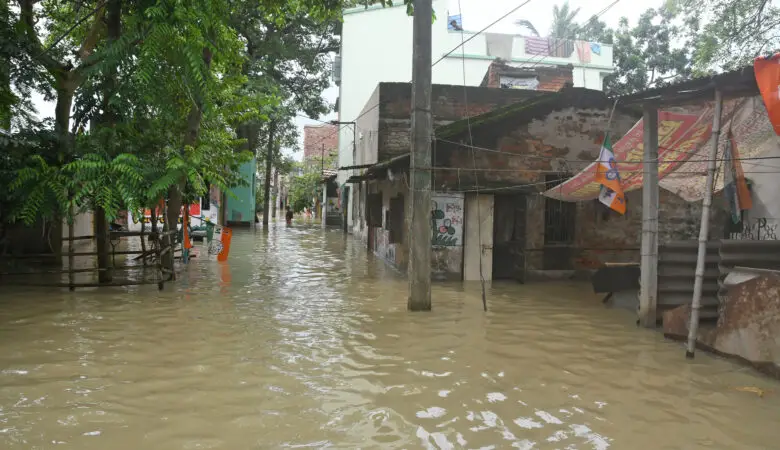Introduction
Climate change is one of the biggest challenges that our world is facing today. It is impacting our cities in many ways, including extreme weather events, sea level rise, and changes in temperature and precipitation patterns. The IPCC Sixth Assessment Report estimates that 3.3 to 3.6 billion people live in contexts that are highly vulnerable to climate change. As a result, it is becoming increasingly important for cities to develop climate-responsive planning strategies to mitigate the effects of climate change and adapt to its impacts.
Climate-responsive planning is a process that takes into account the potential impacts of climate change and aims to create urban environments that are resilient to these impacts. It involves the integration of climate change considerations into all aspects of urban planning, including land use, transportation, infrastructure, and building design. The goal of climate-responsive planning is to create sustainable and livable cities that are prepared for the challenges of the future.
Why is Climate-Responsive Planning Important?
Climate change is already having significant impacts on cities around the world, and these impacts are expected to increase in severity and frequency in the coming years. By implementing climate-responsive planning strategies, cities can reduce the risks associated with climate change and ensure that their citizens are safe and secure.
As temperatures rise and extreme weather events become more frequent, cities need to adapt and become more resilient. Climate-responsive planning involves taking into account factors such as local weather patterns, changing temperatures, and sea-level rise when designing buildings, infrastructure, and public spaces. It also involves promoting sustainable transportation options, reducing carbon emissions, and encouraging green spaces. By implementing climate-responsive planning, cities can create healthier, more livable communities that are better equipped to withstand the challenges of a changing climate.
Understanding the impact of climate change on cities
Climate change is a global phenomenon that is affecting cities in various ways. Rising sea levels, more frequent and intense natural disasters, and extreme temperatures are some of the impacts that cities are facing. The consequences of climate change on cities can be devastating, affecting infrastructure, public health, and the economy. It is important to understand the impact of climate change on cities to develop effective strategies to mitigate its effects and build resilience. Cities need to take action to reduce their carbon footprint and adapt to the changing climate to ensure a sustainable future for their inhabitants.

Image: West Bengal floods are becoming more frequent, an impact of climate change
Key principles of climate-responsive planning
There are several key principles that are essential to climate-responsive planning. These include:
- Understanding the local climate and its potential impacts on the city
- Identifying vulnerabilities and risks associated with climate change
- Developing strategies to reduce emissions and adapt to climate change
- Engaging with stakeholders and communities to ensure that their needs are met
- Monitoring and evaluating the effectiveness of climate-responsive planning strategies over time
Strategies for climate-responsive planning in cities
Climate-responsive planning involves a number of strategies that can help cities prepare for and mitigate the effects of climate change. These strategies include:
- Developing green infrastructure, such as parks, gardens, and green roofs, which can help to reduce urban heat islands and increase resilience to extreme weather events.
- Retrofitting existing buildings to make them more energy efficient and reduce emissions.
- Developing bike and pedestrian-friendly transportation systems to reduce reliance on cars and promote healthier lifestyles.
- Creating public spaces that provide shade, cooling, protection from extreme weather events and reduce heat island effects.
- Establishing emergency response plans to prepare for disasters and other climate-related impacts.
- Adopting sustainable urban planning approaches that prioritize green spaces, low-carbon transportation, and renewable energy sources.
- Incorporating climate considerations into decision-making processes in order to ensure long-term resilience.
- Engaging with stakeholders and communities to solicit feedback and ensure that their needs are addressed.
- Monitoring and evaluating the effectiveness of climate-responsive strategies over time.
Case studies of successful climate-responsive planning in cities
In the face of climate change, cities around the world are beginning to implement innovative strategies to become more climate-responsive. Here are two case studies of successful initiatives:
Copenhagen, Denmark
The city of Copenhagen has committed to becoming carbon-neutral by 2025. The Copenhagen 2025 Climate Plan is based on four pillars: Energy Consumption, Energy Production, Mobility with reduced emissions and City Administration Initiatives, which are critical to the overall objective of carbon neutrality. To achieve the goal of carbon-neutral by 2025, it has implemented a number of initiatives such as creating green roofs and parks, developing bike lanes and pedestrian pathways, retrofitting buildings, and investing in renewable energy sources.

Image: Map of Copenhagen city
Malmö, Sweden
The city of Malmö, Sweden has implemented a number of climate-responsive strategies as part of its Sustainable Urban Development plan. These include the construction of green infrastructure, increased funding for sustainable transportation systems, retrofitting buildings to increase energy efficiency, and the promotion of renewable energy sources.

Image: Map of Malmo city
In order to ensure that climate-responsive planning is effective, cities must take an integrated approach that considers the social, economic, and environmental factors. Cities should also ensure that their strategies are tailored to the local context and involve all stakeholders in the decision-making process. Additionally, cities should monitor and evaluate their initiatives over time in order to identify any areas of improvement.
Challenges and barriers to climate-responsive planning in cities
Although climate-responsive planning can yield numerous benefits, it also has its challenges. One major challenge is the need for significant financial and human resources to implement these strategies. Cities often lack the funds to adequately plan for and manage the impacts of climate change, making it difficult to enact large-scale changes. Additionally, many cities are simply unaware of the potential impacts of climate change and lack the capacity to implement strategies that address it. Other challenges include the need to engage multiple stakeholders, the difficulty in obtaining reliable data and information and addressing existing inequalities between communities.
Solutions to overcome challenges and barriers
In order to overcome the challenges and barriers of climate-responsive planning in cities, there are a number of solutions that can be implemented. Among many, here’s a list of three solutions that can contribute to overcoming the challenges of climate-responsive planning.
Firstly, cities should establish dedicated teams to focus on climate change and create long-term strategies for adapting to its impacts.
Secondly, governments should invest in research to provide reliable data and information about climate change and ensure that they are accessible to all stakeholders.
Finally, stakeholders should be engaged throughout the planning process to ensure that all voices are heard.
Conclusion
Climate change is a complex and urgent challenge that requires action from all sectors of society, including cities. Climate-responsive planning is a key tool for cities to mitigate the impacts of climate change and create more sustainable and livable urban environments. To do this, cities must take an integrated approach that considers social, economic, and environmental factors. This needs to be done by understanding the local climate, identifying vulnerabilities and risks, and implementing strategies to reduce emissions and adapt to changing conditions. Stakeholders must be involved in the decision-making process and given access to reliable data and information. Finally, governments must invest resources into researching and implementing effective solutions. Through careful planning and engagement with stakeholders, cities can create healthier, more livable communities that are better able to withstand the impacts of climate change.
Read similar articles:
very beast short notes continue for the feature. …